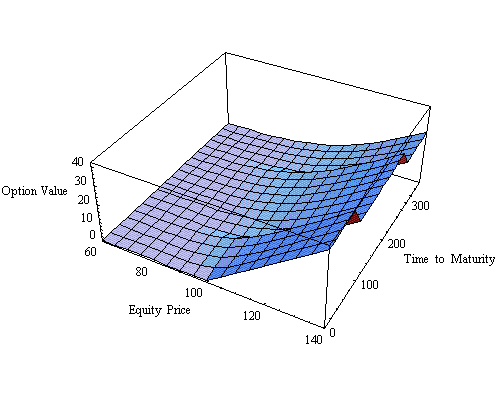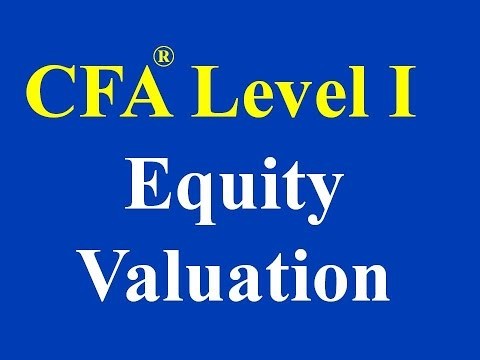Option Pricing Applications in Equity Valuation
Post on: 23 Май, 2015 No Comment

APPLICATIONS OF OPTION PRICING THEORY TO EQUITY VALUATION
Application of option pricing models to valuation
A few caveats on applying option pricing models
1. The underlying asset is not traded
- Option pricing theory is built on the premise that a replicating portfolio can be created using the underlying asset and riskless lending and borrowing.
- The options presented in this section are on assets that are not traded, and the value from option pricing models have to be interpreted with caution.
2. The price of the asset follows a continuous process
- The Black-Scholes option pricing model is derived under the assumption that the underlying asset’s price process is continuous, i.e. there are no price jumps.
- If this assumption is violated, as it is with most real options, the model will underestimate the value of deep out-of-the-money options.
- One solution is to use a higher variance estimate to value deep out-of-the-money options and lower variance estimates for at-the-money or in-the-money options.
- Another is to use an option pricing model that explicitly allows for price jumps, though the inputs to these models are often difficult to estimate.
3. The variance is known and does not change over the life of the option
- The assumption that option pricing models make, that the variance is known and does not change over the option lifetime, is not unreasonable when applied to listed short-term options on traded stocks.
- When option pricing theory is applied to long-term real options, there are problems with this assumption, since the variance is unlikely to remain constant over extended periods of time and may in fact be difficult to estimate in the first place.
4. Exercise is instantaneous
- The option pricing models are based upon the premise that the exercise of an option is instantaneous.
- This assumption may be difficult to justify with real options, where exercise may require the building of a plant or the construction of an oil rig, actions which are unlikely to happen in an instant.
- The fact that exercise takes time also implies that the true life of a real option is often less than the stated life.

I. Valuing Equity as an option
The General Framework
- The equity in a firm is a residual claim, i.e. equity holders lay claim to all cashflows left over after other financial claim-holders (debt, preferred stock etc.) have been satisfied.
- If a firm is liquidated, the same principle applies, with equity investors receiving whatever is left over in the firm after all outstanding debts and other financial claims are paid off.
- The principle of limited liability, however, protects equity investors in publicly traded firms if the value of the firm is less than the value of the outstanding debt, and they cannot lose more than their investment in the firm.
Equity as a call option
- The payoff to equity investors, on liquidation, can therefore be written as:
Payoff to equity on liquidation
= V — D if V > D
= 0 if V
where,
V = Value of the firm
D = Face Value of the outstanding debt and other external claims
- A call option, with a strike price of K, on an asset with a current value of S, has the following payoffs:
Payoff on exercise = S — K if S > K
= 0 if S
Payoff Diagram for Equity as a Call Option
- Equity can thus be viewed as a call option the firm, where exercising the option requires that the firm be liquidated and the face value of the debt (which corresponds to the exercise price) paid off.
- If the debt in the firm is a single issue of zero-coupon bonds with a fixed lifetime, and the firm can be liquidated by equity investors at any time prior, the life of equity as a call option corresponds to the life of the bonds .
Illustration 3: Application to valuation: A simple example
- Assume that you have a firm whose assets are currently valued at $100 million and that the standard deviation in this asset value is 40%.
- Further, assume that the face value of debt is $80 million (It is zero coupon debt with 10 years left to maturity).
- If the ten-year treasury bond rate is 10%, how much is the equity worth? What should the interest rate on debt be?
Model Parameters
The parameters of equity as a call option are as follows:
Value of the underlying asset = S = Value of the firm = $ 100 million
Exercise price = K = Face Value of outstanding debt = $ 80 million
Life of the option = t = Life of zero-coupon debt = 10 years
Variance in the value of the underlying asset = s 2 = Variance in firm value = 0.16














